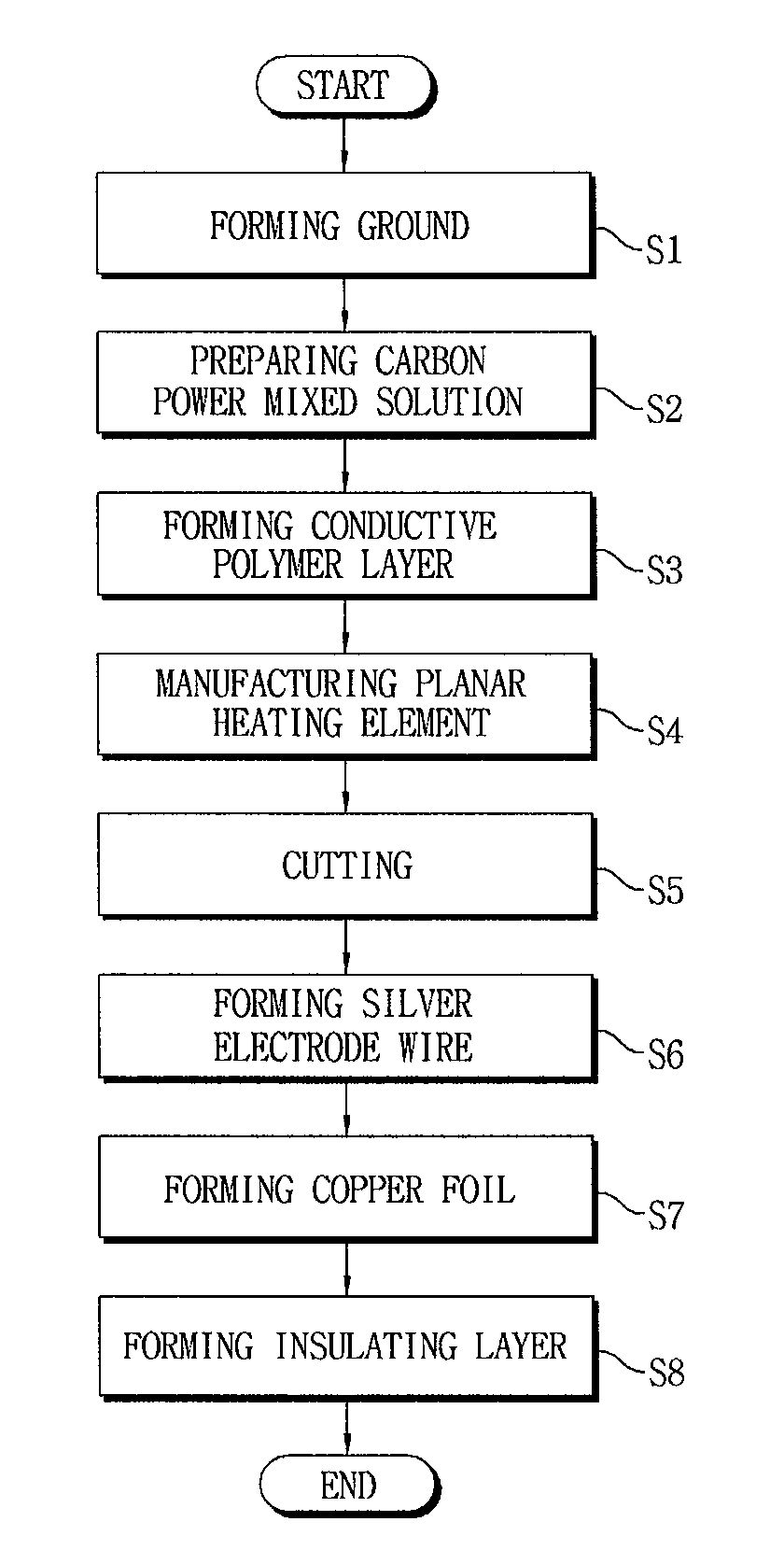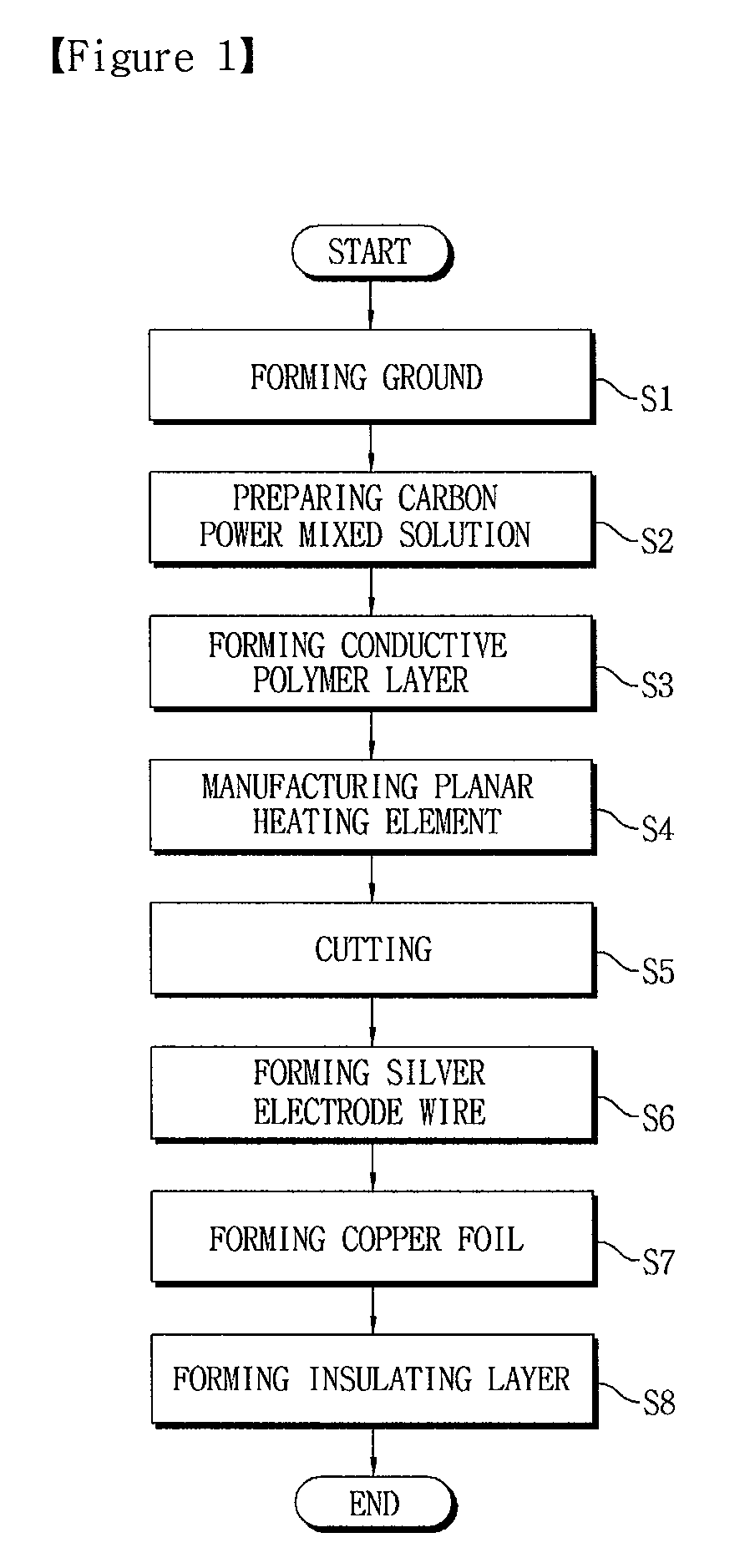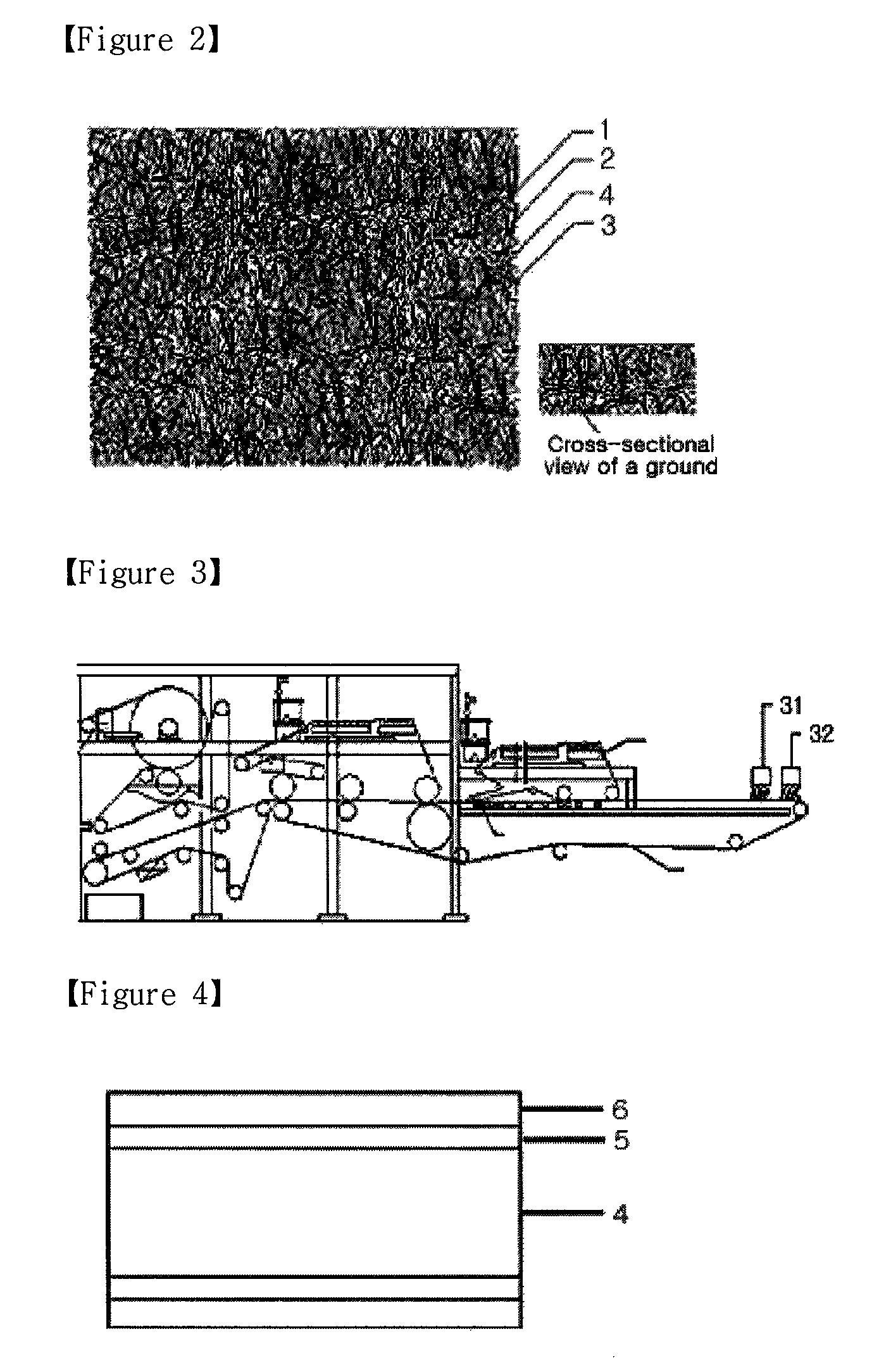Method for manufacturing planar heating element using carbon micro-fibers
a technology of carbon microfibers and heating elements, applied in the direction of coatings, other domestic articles, bands, etc., can solve the problems of limited heating temperature limited material of insulating films, and limited temperature and use of conventional planar heating elements. achieve the effect of reducing energy consumption, improving temperature application range, and efficiently reducing energy consumption
- Summary
- Abstract
- Description
- Claims
- Application Information
AI Technical Summary
Benefits of technology
Problems solved by technology
Method used
Image
Examples
first embodiment
[0063]Hereinafter, a method for manufacturing a planar heating element using carbon micro-fibers according to the present invention will be described in detail with reference to the accompanying drawings.
[0064]In the following description of the present invention, detailed description of related function and configuration is omitted when it can make main points of the present invention vague. The following terms are defined by considering the function of the present invention and they can be changed according to intention of a user or custom. Thus, definition of terms should be made based on the content of the whole specification.
[0065]FIG. 1 shows a flowchart for explaining a method for manufacturing a planar heating element using carbon micro-fibers according to the first embodiment of the present invention. FIG. 2 shows a plan view and a cross-sectional view of a ground with prepared and cultured carbon micro-fibers according to the method for manufacturing a planar heating eleme...
second embodiment
[0114]Hereinafter, a method for manufacturing a planar heating element using carbon micro-fibers according to the present invention will be described in detail with reference to the accompanying drawings.
[0115]In the following description of the present invention, detailed description of related function and configuration is omitted when it can make main points of the present invention vague. The following terms are defined by considering the function of the present invention and they can be changed according to an intention of a user or custom. Thus, definition of terms should be made based on the content of the whole specification.
[0116]FIG. 9 shows a diagram showing a planar heating element manufacturing apparatus using carbon micro-fibers according to the second embodiment of the present invention. FIG. 10 shows a primary ground in the method for manufacturing a planar heating element using carbon micro-fibers according to the second embodiment of the present invention. FIG. 11 ...
PUM
| Property | Measurement | Unit |
|---|---|---|
| thickness | aaaaa | aaaaa |
| length | aaaaa | aaaaa |
| width | aaaaa | aaaaa |
Abstract
Description
Claims
Application Information
 Login to View More
Login to View More - R&D
- Intellectual Property
- Life Sciences
- Materials
- Tech Scout
- Unparalleled Data Quality
- Higher Quality Content
- 60% Fewer Hallucinations
Browse by: Latest US Patents, China's latest patents, Technical Efficacy Thesaurus, Application Domain, Technology Topic, Popular Technical Reports.
© 2025 PatSnap. All rights reserved.Legal|Privacy policy|Modern Slavery Act Transparency Statement|Sitemap|About US| Contact US: help@patsnap.com



